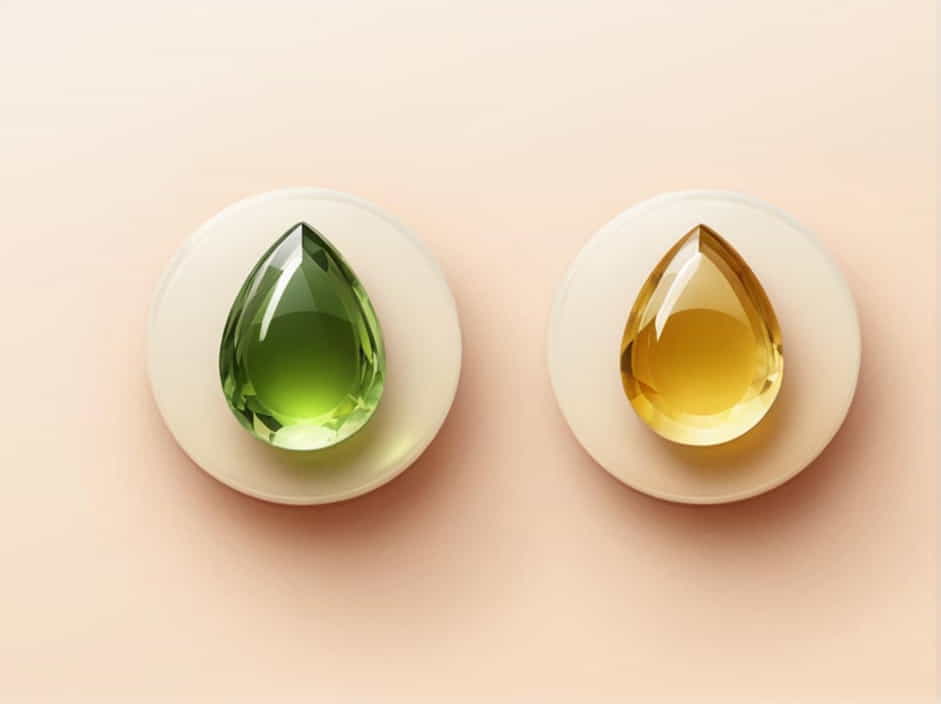Moldavite and Libyan Desert Glass are two of the most fascinating natural glasses formed by meteorite impacts. These unique materials are prized not only for their scientific significance but also for their metaphysical properties. Many believe these tektites hold powerful energy due to their extraterrestrial origins.
This topic explores what moldavite and Libyan Desert Glass are, how they form, their differences, and their mystical significance.
What Is Moldavite?
Moldavite is a rare green tektite found primarily in the Czech Republic. It is believed to have formed around 15 million years ago due to a meteorite impact that created the Ries Crater in Germany.
Physical Characteristics of Moldavite
- Color: Ranges from light green to deep forest green.
- Texture: Often wrinkled or sculpted due to natural etching.
- Transparency: Can be translucent or opaque, depending on the quality.
- Hardness: Around 5.5 on the Mohs scale, making it relatively soft.
Formation of Moldavite
When a large meteorite struck Earth, the intense heat and pressure melted the surrounding silica-rich rocks. The molten material was ejected into the atmosphere, cooling rapidly before falling back to the ground as glass-like fragments-which we now call moldavite.
Where Is Moldavite Found?
Moldavite deposits are mostly located in southern Germany, Austria, and the Czech Republic, with the highest quality specimens coming from Bohemia and Moravia. Due to its rarity, moldavite is highly sought after by collectors and spiritual practitioners.
What Is Libyan Desert Glass?
Libyan Desert Glass is a mysterious yellow tektite found in the Sahara Desert, mainly in Libya and Egypt. This material is much older than moldavite, estimated to be around 29 million years old.
Physical Characteristics of Libyan Desert Glass
- Color: Ranges from pale yellow to deep golden amber.
- Texture: Smooth and glassy, often with small inclusions.
- Transparency: Can be translucent or fully transparent.
- Hardness: 6.5-7 on the Mohs scale, making it harder than moldavite.
Formation of Libyan Desert Glass
Scientists believe Libyan Desert Glass formed when a meteorite or comet exploded over the desert, generating extreme heat that melted the sand. This molten material cooled quickly, creating the unique golden glass scattered across the Sahara today.
Where Is Libyan Desert Glass Found?
Libyan Desert Glass is mainly discovered in remote desert areas of Libya and Egypt. Ancient civilizations, including the Egyptians, prized it for its beauty-one of the most famous artifacts containing it is Tutankhamun’s scarab amulet, found in his burial mask.
Differences Between Moldavite and Libyan Desert Glass
| Feature | Moldavite | Libyan Desert Glass |
|---|---|---|
| Color | Green (light to deep) | Yellow to golden amber |
| Age | ~15 million years | ~29 million years |
| Hardness | 5.5 on Mohs scale | 6.5-7 on Mohs scale |
| Formation | Meteor impact with ejected material | Airburst explosion melting desert sand |
| Location | Czech Republic, Germany, Austria | Libya, Egypt |
Both materials have extraterrestrial origins, but their formation processes and physical properties make them distinct.
Metaphysical Properties of Moldavite
Moldavite is often called the “Stone of Transformation” due to its intense vibrational energy. Many people believe it accelerates spiritual awakening and enhances psychic abilities.
Spiritual Benefits of Moldavite
- Enhances intuition and spiritual growth.
- Aids in emotional healing and personal transformation.
- Stimulates the heart and third eye chakras.
- Helps release past traumas and negative energy.
Many users report experiencing a strong energetic sensation when holding moldavite, often described as a heatwave or tingling.
Metaphysical Properties of Libyan Desert Glass
Libyan Desert Glass is known as a stone of manifestation and protection. It is believed to connect individuals with ancient wisdom and provide spiritual guidance.
Spiritual Benefits of Libyan Desert Glass
- Boosts confidence and personal strength.
- Encourages clarity and decision-making.
- Protects against negative energies.
- Enhances solar plexus chakra activation.
Due to its connection to ancient Egypt, many believe Libyan Desert Glass holds ancestral knowledge and mystical powers.
How to Use Moldavite and Libyan Desert Glass
These tektites can be used in meditation, jewelry, and healing practices.
Wearing as Jewelry
- Moldavite pendants are worn for spiritual transformation.
- Libyan Desert Glass rings are believed to bring prosperity and protection.
Meditation Practices
- Hold moldavite to activate the heart chakra and enhance visions.
- Place Libyan Desert Glass on the solar plexus chakra for energy balance.
Energy Healing
- Moldavite is used in Reiki sessions to clear blockages.
- Libyan Desert Glass helps create a protective shield around the aura.
How to Identify Genuine Moldavite and Libyan Desert Glass
Due to their popularity, many fake versions are sold on the market. Here’s how to spot genuine tektites:
Signs of Real Moldavite
- Has a natural, rough texture with visible etchings.
- Feels lighter than glass due to its aerated structure.
- Shows bubbles and inclusions under a microscope.
Signs of Real Libyan Desert Glass
- Has a smooth, wind-polished surface.
- Appears semi-translucent with a waxy luster.
- Contains tiny air bubbles and mineral inclusions.
Buying from trusted sellers ensures you get authentic moldavite and Libyan Desert Glass.
Moldavite and Libyan Desert Glass are two of the most powerful and intriguing tektites known to humankind. While moldavite is known for spiritual transformation and high energy, Libyan Desert Glass is valued for its protective and grounding properties.
Both materials have fascinating scientific origins and mystical significance, making them highly sought after by collectors, healers, and spiritual seekers. Whether you are drawn to their extraterrestrial beauty or their metaphysical power, these tektites continue to inspire wonder and fascination.
